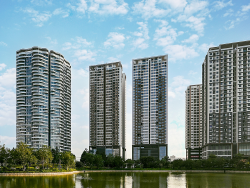
Water damage can happen any number of ways. The supply connection to a toilet cracks and results in a slow leak during a holiday weekend when no one is home. The flange on the 100-year-old steam radiator in the living room finally gives out. Water used to extinguish the fire in one apartment ends up cascading into the unit below. No matter how or when it occurs, non-weather-related leaks, spills, and floods are an unfortunate reality – and are on the rise according to Chubb data.
The number one source of property damage to residential property is non-weather-related water losses – and high-rise residential properties are more vulnerable than ever due to their close proximity to neighboring units. Unlike in freestanding homes where the installation of an in-line automatic shutoff device is a feasible option, high-rise properties branch off the same riser pipe in a building. Installation of such a system becomes impossible, as cutting off the flow of water to one property could eliminate the flow to a whole floor. So, what can be done about potential water intrusion in an individual unit?
The answer? Installing a Point of Leak Detector (POLD).
These small sensors are silver bullets in the fight against major water losses in a high-rise home. The mechanism of action is simple: as water leaks from a pipe or supply connection and comes into contact with the sensors, the sensor’s probes register the leak and an alarm signal is transmitted to the phone of the client or building superintendent. Then, the individual will be able to isolate the leak based on which sensor was activated and take steps to mitigate potential water damage. These systems come in a variety of options, that can be tailored to each unit.
Most importantly, these systems will only succeed with the correct sensor placement. These should be placed in locations that are prone to water intrusion, including, but not limited to:
- Kitchen: under the dishwasher, sink, and refrigerator(s)
- Bathrooms: by each toilet and under each sink
- Heating/cooling units: one by each through wall unit and/or steam radiators
- Terrace doors (sensor ropes are available to cover the length of the threshold)
The needs of each home vary according to the layout and interior finishes. Consider consulting a company that specializes in water security options to analyze the needs of each individual property and properly install the most effective system.
For more information on the installation and operation of POLD systems, visit www.chubb.com/water, or contact a licensed agent to discuss the benefits of installing such systems in high-rise residences.
Alec Meehan is a Risk Consultant for Chubb Personal Risk Services.
The opinions and positions expressed are the authors’ own and not those of Chubb. The information and/ or data provided herein is for informational purposes only and is not a substitute for professional advice. Insurance coverage is subject to the language of the policies as issued.